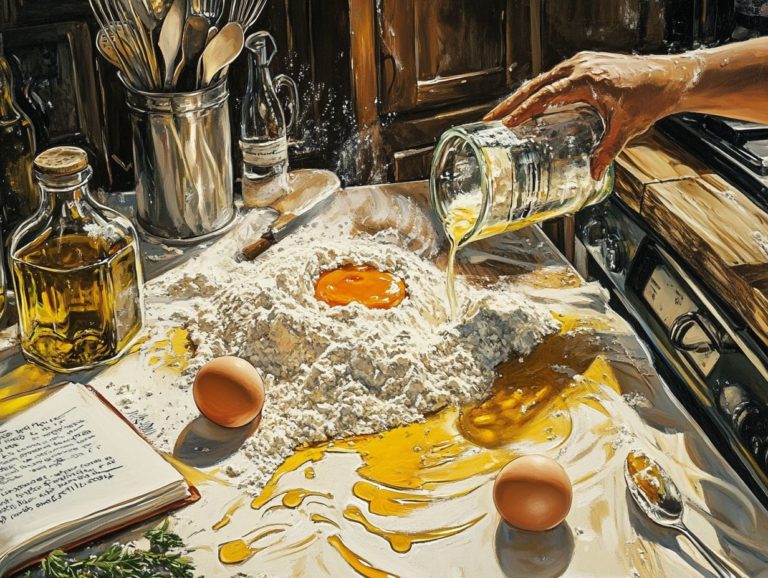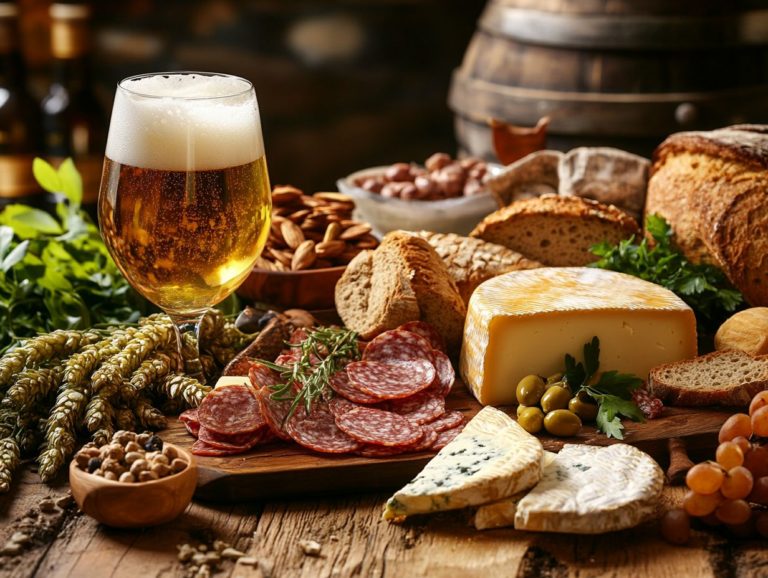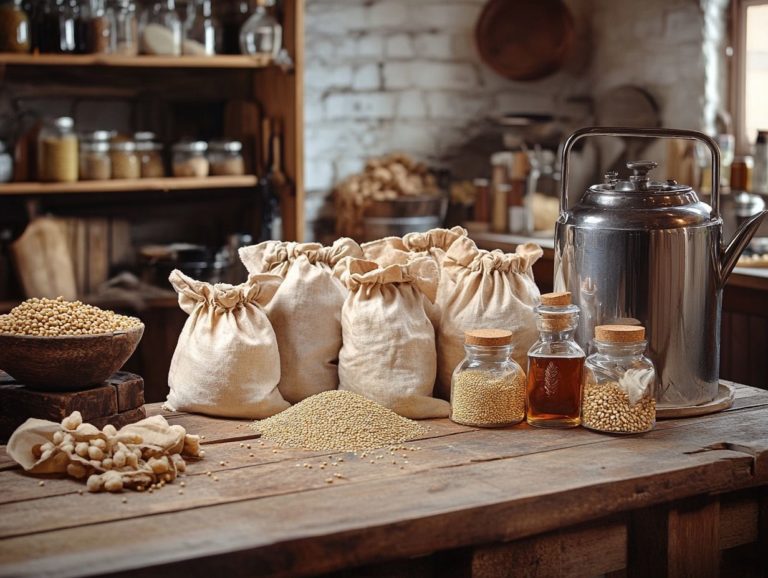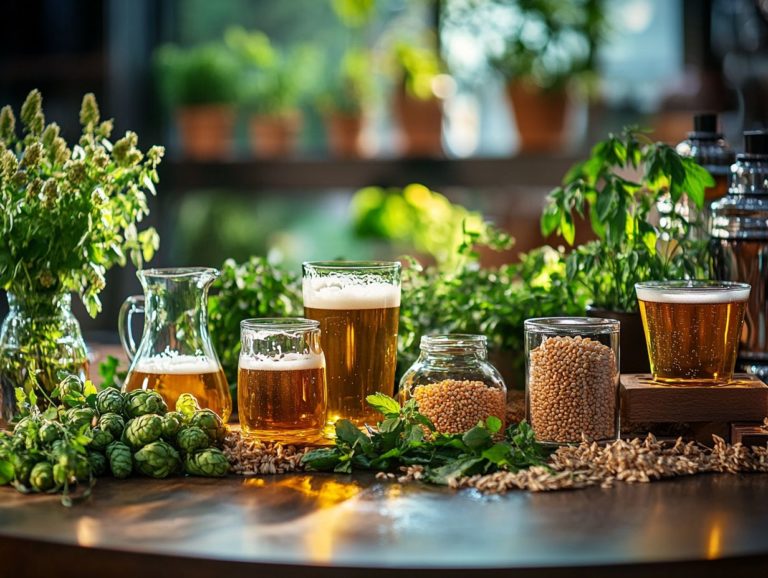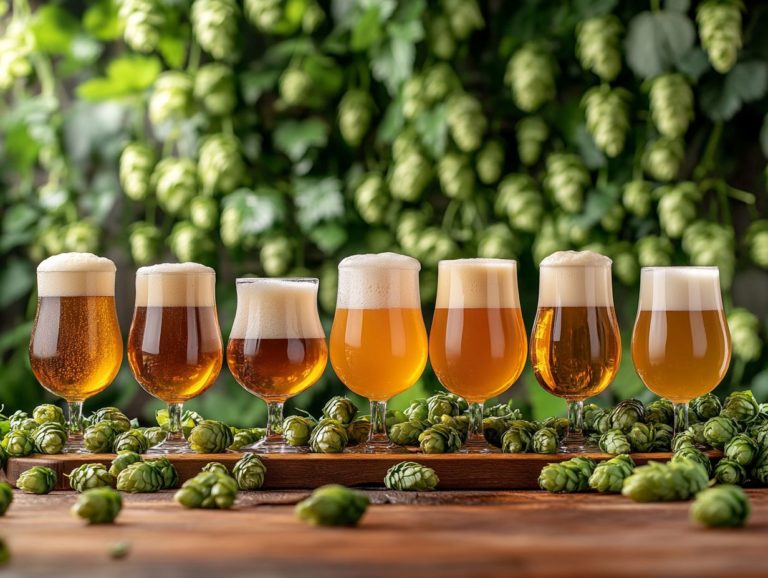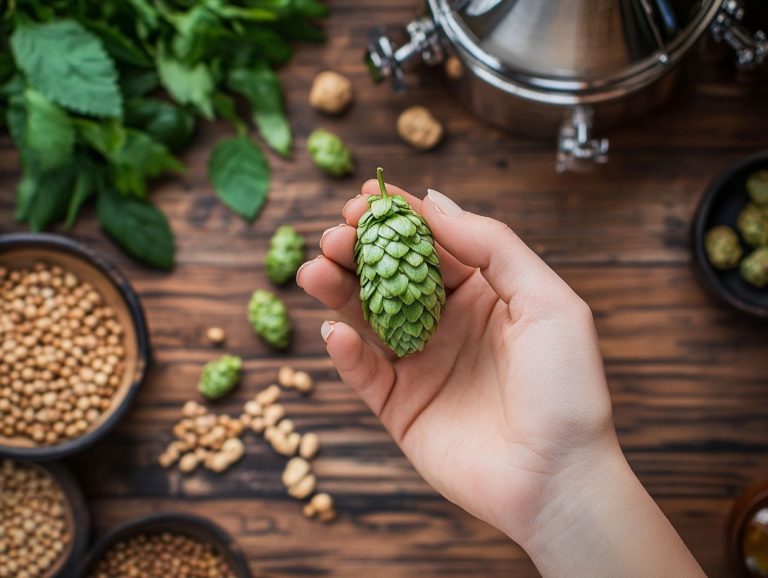Understanding the Role of Carbonation in Beer
Carbonation plays a pivotal role in the realm of beer, shaping everything from flavor to mouthfeel. It elevates the drinking experience of a distinct refreshing bubbly beer and significantly influences how you perceive both taste and aroma. Get ready to discover why carbonation is essential, how it affects the overall flavor profile, and the various factors that can alter its levels. For those who take their brewing seriously, you’ll uncover expert tips that will elevate your brewing game!
Dive in with us as we unveil the effervescent secrets behind your favorite brews!
Contents
Key Takeaways:
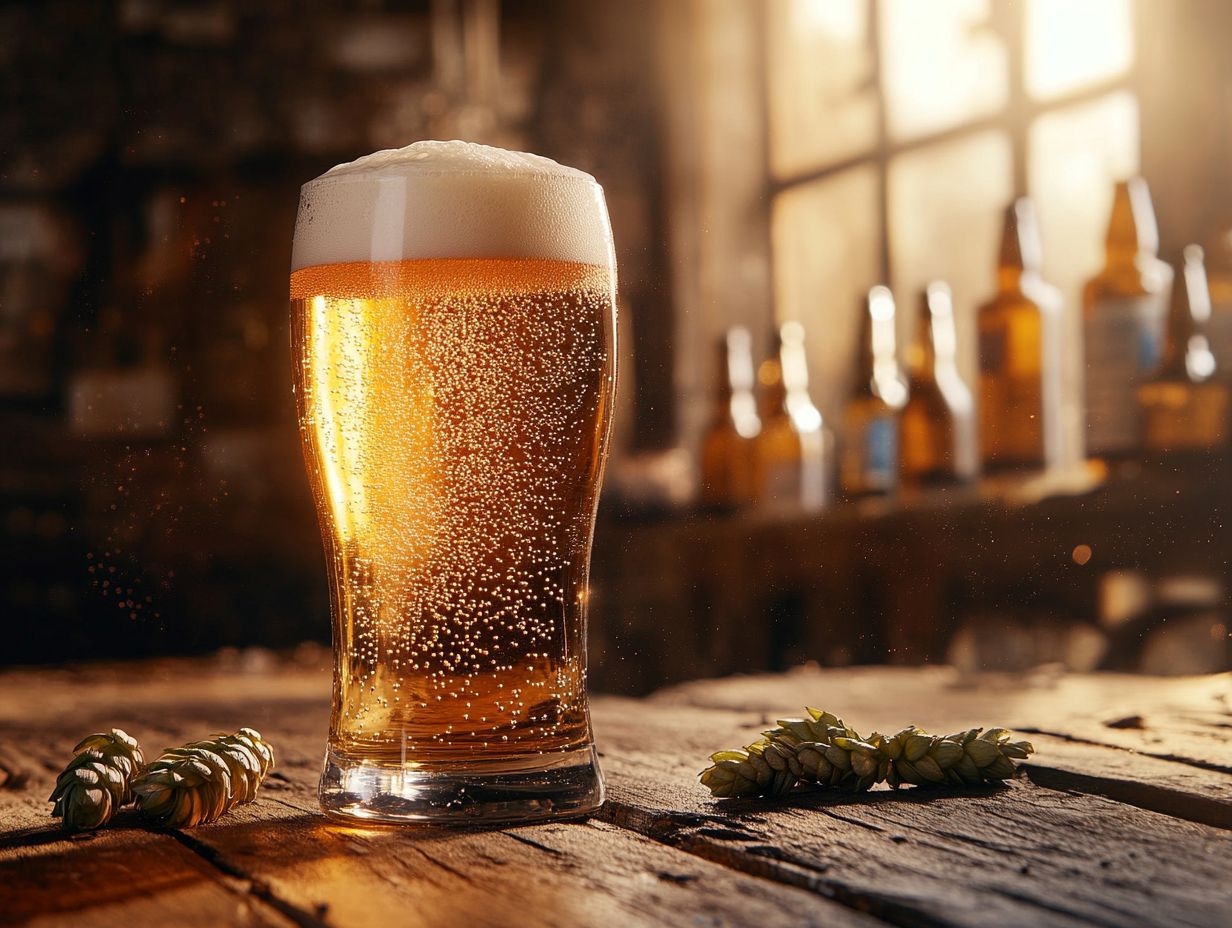
- Carbonation is crucial in enhancing the flavor, mouthfeel, and foam of beer.
- Carbonation affects the taste of beer through carbonic acid (a compound that can affect taste), bitterness perception, and aroma release.
- Factors such as temperature, pressure, and type of beer play a role in carbonation levels, which can be controlled through techniques and tools.
Why Is Carbonation Important in Beer?
Carbonation is an essential element in the brewing process, elevating the experience of enjoying a crisp, bubbly beer a beloved choice for many enthusiasts. It not only imparts that unmistakable refreshing quality found in various beer styles but also plays a pivotal role in shaping flavor complexity, mouthfeel, and presentation.
Grasping the significance of carbonation is vital for you, whether you’re a brewer or a consumer, as it influences both the sensory enjoyment and the proper storage of the beer, ensuring its carbonation levels remain intact over time.
1. Enhances Flavor
Carbonation plays a vital role in beer, enhancing the complexity of flavors by engaging your taste buds and releasing delightful aromas. This effervescence elevates the drinking experience, infusing it with a dynamic quality.
Take Belgian ales, for instance; their high carbonation levels contribute significantly to the fruity and spicy notes, crafting an invigorating profile that dances on your palate. On the other hand, consider a cream stout, which typically features lower carbonation. This choice results in a smooth mouthfeel that beautifully highlights its rich chocolate flavors.
The intricate fermentation process in brewing, combined with careful adjustments of gas levels in conditioning tanks, shapes these distinct profiles. Grasping the principles of gas laws is essential, as they determine how CO2 dissolves in liquid, ultimately influencing the quality and enjoyment of the beers you savor.
2. Affects Mouthfeel
The level of carbonation in beer significantly impacts its mouthfeel. High carbonation delivers a lively and effervescent sensation, while low carbonation offers a smoother, creamier texture. The dynamic interaction is influenced by the fermentation process and how each liquid holds carbon dioxide.
You ll notice this dynamic interaction especially when comparing different beer styles. For instance, a well-carbonated lager provides a crisp, refreshing bite that enhances the overall drinking experience, making it perfect for those hot summer days.
On the other hand, stouts, with their lower carbonation, deliver a velvety mouthfeel that beautifully accentuates flavors like chocolate and coffee, enveloping your palate in richness. Beers with moderate carbonation levels, such as ambers or pale ales, strike a balance, offering a pleasant fizz alongside a fuller flavor profile.
By understanding how carbonation influences mouthfeel, you can significantly enhance your appreciation of beer, guiding your choices based on both taste and occasion.
Ready to elevate your beer experience? Try adjusting the carbonation levels in your next brew!
Summary
In summary, carbonation is crucial for enhancing flavor, mouthfeel, and overall beer experience. Understanding its role allows both brewers and consumers to appreciate and enjoy beer to its fullest potential.
3. Creates Foam and Head
Carbonation levels, influenced by yeast activity and sugar added during brewing, create the foam and head on your beer, enhancing its visual allure while enriching the aroma and taste experience.
This intricate relationship ties closely to yeast activity during fermentation, where the fermentation process dictates the levels of carbonation achieved. Different beer styles, such as IPAs or stouts, showcase varying carbonation levels that directly influence the formation and stability of that coveted frothy layer.
A well-carbonated lager may present a persistent, creamy head, while a more effervescent ale generates a lively foam that dances joyfully upon pouring.
Thus, the interplay between yeast behavior and carbonation nuances is pivotal in defining the overall quality and presentation of your beverage. Tools like the nitrogen separator are used in advanced brewing setups to achieve desired carbonation characteristics.
How Does Carbonation Affect the Taste of Beer?
1. Carbonic Acid
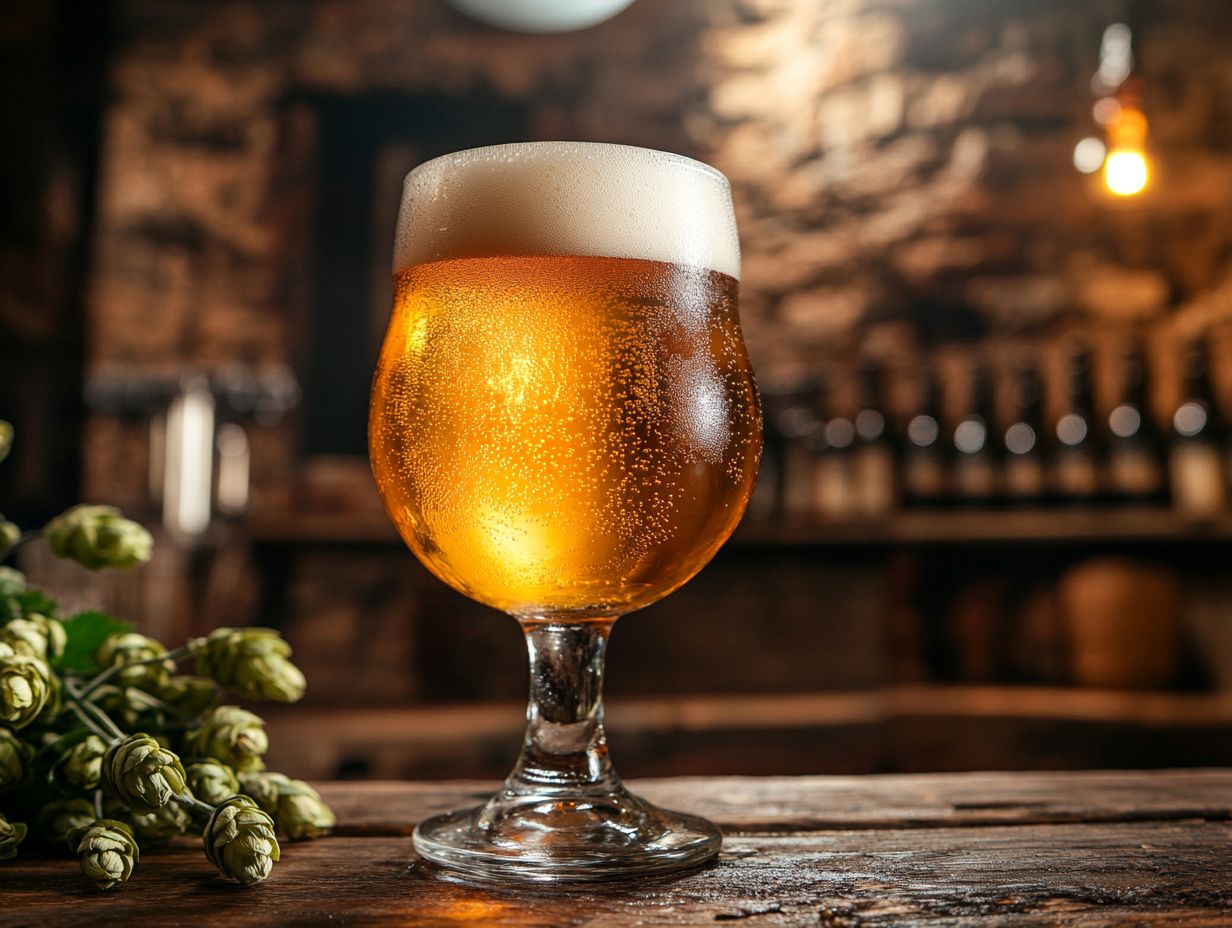
When carbon dioxide dissolves in your beer, it creates carbonic acid, introducing a delightful tartness that enhances the overall flavor profile and elevates your tasting experience.
This interaction affects not just the taste but also significantly influences the mouthfeel and aroma. The mild acidity from carbonic acid skillfully balances the sweetness of the malt, crafting a refreshing contrast appreciated by many beer enthusiasts.
Carbonation levels significantly impact flavor perception, as the bubbles transport aroma compounds that release fragrant notes when you pour or sip your beer. Grasping the chemistry of carbonation and forming carbonic acid becomes essential for brewers aspiring to create beverages that tantalize taste buds and engage all your senses in a captivating experience.
2. Bitterness Perception
Carbonation plays a key role in how you perceive bitterness in beer. The right level of carbonation effectively balances the bitter notes characteristic of various styles.
Take India Pale Ales (IPAs), for example. A higher carbonation level can amplify the perception of hop bitterness, allowing those vibrant citrus and pine notes to truly shine. Conversely, stouts, which typically showcase rich roasted malt flavors, often benefit from a lower level of carbonation. This approach helps soften any harshness from the bitterness, allowing the inherent sweetness to come through. Understanding the principles of Henry s Law and Charles Law can enhance the control of carbonation in different beer styles.
This interaction illustrates that carbonation does more than just provide a fizzy mouthfeel; it actively shapes your overall experience of a beer’s flavor profile. Recognizing this relationship is essential for brewers who aspire to craft beers that achieve a harmonious balance whether they’re creating a zesty IPA or a rich, velvety stout.
3. Aroma Release
Carbonation is essential for releasing aroma, as those effervescent bubbles transport aroma compounds to your nose, enriching the overall flavor complexity of the beer.
This captivating process is shaped by various carbonation techniques, including natural conditioning, force carbonation, and nitro infusion, each bringing a delightful sensory journey. For example, natural conditioning allows yeast to develop carbon dioxide, resulting in a fuller mouthfeel and potentially heightening the aromatic profile through its interaction with the beer s ingredients. In contrast, force carbonated beer delivers bubbles more quickly, creating a sharper sensation that might overshadow the more delicate fragrance notes.
For brewers aiming to create beers with a harmonious and inviting bouquet, understanding how carbonation influences aromatic compounds is vital. This knowledge ultimately enhances the overall enjoyment for beer enthusiasts.
Next time you pour a cold one, pay attention to the foam and aroma how does it enhance your tasting adventure?
What Are the Factors That Affect Carbonation in Beer?
Understanding the factors that influence carbonation in beer is essential for any brewer. Several elements affect carbonation, including temperature, pressure during fermentation, and the specific type of beer being brewed. Each of these plays a crucial role in determining the final carbonation levels and ensuring that your brew achieves the perfect effervescence. The principles of Boyle s Law also come into play, affecting how pressure released impacts carbonation.
1. Temperature
Temperature plays a crucial role in carbonation. Warmer conditions enhance the ability of gas to dissolve during fermentation, ultimately influencing the final carbonation levels of your brew. This ties into the broader gas laws that dictate how carbonation behaves under different conditions.
You can strategically leverage this relationship to tailor the carbonation of your beverages. This ensures that the mouthfeel and overall drinking experience align perfectly with your desired style. For instance, when fermentation occurs at elevated temperatures, the yeast becomes more active, resulting in greater carbon dioxide production. This is particularly advantageous for styles like IPAs or wheat beers, which thrive on a crisper, livelier finish.
On the flip side, cooler fermentation temperatures typically yield lower carbonation levels. This offers a smoother, more subdued taste that s ideal for stouts and other darker ales. By adjusting the temperature throughout the brewing process from fermentation to conditioning you can fine-tune carbonation and enhance the distinctive attributes of your final product.
2. Pressure
Pressure plays a pivotal role in carbonation, influencing the solubility of carbon dioxide in your beer, especially throughout the fermentation and bottling processes. Controlling pressure while ensuring yeast remains active allows brewers to adjust carbonation levels to match their desired outcome.
As you embark on your brewing journey, understanding the nuances of pressure dynamics is essential for achieving the perfect level of carbonation. Higher pressure within fermentation vessels stimulates yeast activity, giving these tiny organisms the power to produce carbon dioxide efficiently, which then dissolves into your brew.
During the bottling phase, the pressure conditions you maintain can either enhance or impede your natural carbonation methods. This delicate balance impacts both the flavor profile and mouthfeel of your final product. It s crucial to monitor and adjust these pressure levels meticulously to ensure that your carbonation is flawlessly balanced, elevating the entire drinking experience.
3. Type of Beer
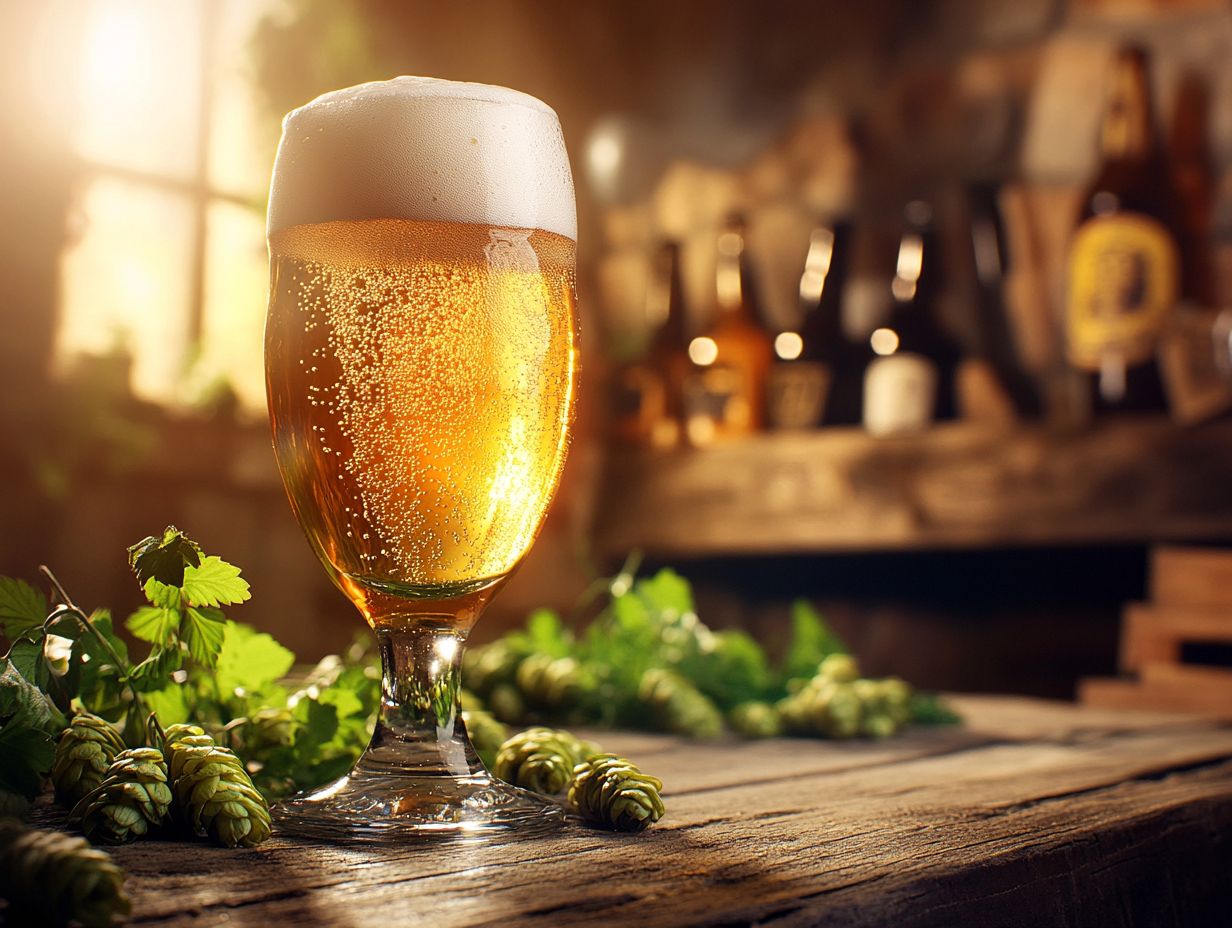
Different beer styles call for varying levels of carbonation. Lagers typically boast higher carbonation compared to stouts, which lean towards a lower carbonation profile.
This distinction matters significantly because carbonation shapes the beer’s mouthfeel and influences its aromatic characteristics. For instance, wheat beers often showcase delightful citrus and banana notes, making moderate to high carbonation essential to amplify their refreshing qualities.
In contrast, traditional English ales thrive with lower carbonation levels, allowing the malt flavors to shine through. This results in a smoother and more rounded profile.
Craft brewers approach this with careful consideration, recognizing that the right level of carbonation can elevate the unique attributes of each style. This ensures that every sip is in harmony with its intended character.
How Can You Control the Carbonation in Your Beer?
Controlling carbonation in beer is crucial for you as a brewer. It enables you to craft the perfect mouthfeel, enhance the aroma, and elevate the overall drinking experience.
By employing various carbonation techniques and tools, you can masterfully manipulate the effervescence to suit your vision.
Are you ready to take your brewing skills to the next level? Experiment with these techniques and share your results!
1. Carbonation Levels
Understanding and adjusting carbonation levels is essential for crafting the perfect beer. It dramatically influences both the taste and mouthfeel of your final product.
To achieve the right level of carbonation, carefully measure and make precise adjustments throughout the brewing process. You might find yourself using techniques such as adding sugar for natural carbonation, kegging, or force carbonating with CO2 to add the right amount of carbon dioxide, enhancing flavors or creating that desirable texture.
Remember, too much carbonation can result in a sharp, overcarbonated brew that obscures subtle flavors. On the other hand, too little carbonation can lead to a flat, uninspiring experience.
Therefore, grasping the science behind carbonation, including factors like temperature and pressure, is crucial for you as a brewer. This knowledge will empower you to achieve not only consistency but also a well-rounded sensory profile in every sip.
2. Carbonation Techniques
As a brewer, you have an array of carbonation techniques at your disposal. These include the art of natural carbonation through priming sugar and the precision of force carbonation with CO2 tanks.
Each method has unique advantages and disadvantages, significantly influencing the final product. For example, natural carbonation often lends a softer mouthfeel and enhances flavor complexity. This makes it particularly suitable for traditional styles like English ales and Belgian beers.
In contrast, force carbonation grants you precise control over carbonation levels. This precision is invaluable when producing lagers or styles requiring a quick turnaround. However, relying too heavily on CO2 tanks can sometimes obscure the beer’s inherent flavors.
It’s crucial to consider the specific characteristics of the beer you’re crafting alongside the production timeline when choosing your carbonation technique. Choose wisely to elevate your brew’s quality!
3. Carbonation Tools
Brewing equipment is essential for achieving the desired carbonation. Tools like nitrogen separators and CO2 tanks can help you master the carbonation process.
These tools are critical in developing the perfect mouthfeel and flavor profile of your final product. For instance, CO2 tanks enable you to manage pressure and maintain a consistent level of carbonation. Meanwhile, nitrogen separators create a smoother, creamier texture, particularly in stouts and porters.
Carbonation stones help with rapid gas dissolution in the liquid, ensuring uniform bubbles throughout your brew. By using these carbonation tools effectively, you can significantly enhance the quality of your beverages, making them more enjoyable for consumers and distinguishing them in a competitive market.
Frequently Asked Questions
Here are some common questions about carbonation in beer:
What is carbonation in beer and why is it important?
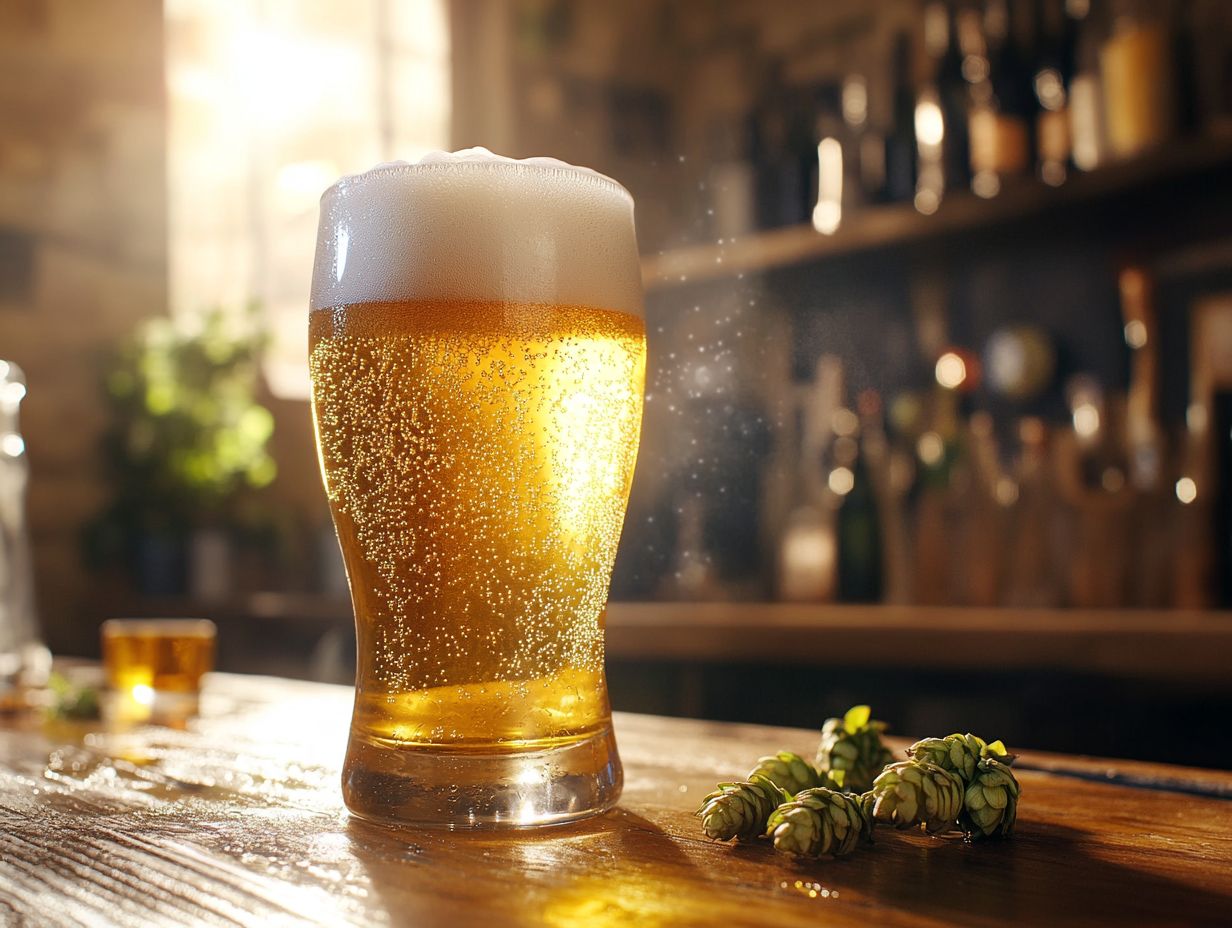
Carbonation in beer refers to the presence of carbon dioxide gas, which gives beer its characteristic bubbles and effervescence. It is important because it affects the flavor, aroma, and mouthfeel of the beer, making it more enjoyable to drink.
What are the different methods of carbonation in beer?
There are two primary methods of carbonation in beer: natural carbonation and forced carbonation. Natural carbonation occurs during the fermentation process, while forced carbonation involves adding carbon dioxide to the beer after fermentation.
What is the ideal level of carbonation in beer?
The ideal level of carbonation in beer varies depending on the style. Generally, lagers and light beers have higher levels of carbonation, while ales and stouts have lower levels. The ideal level is achieved through careful control of the carbonation process.
How does carbonation affect the flavor of beer?
Carbonation in beer contributes to its overall flavor profile by enhancing the perception of bitterness, acidity, and sweetness. It also adds a refreshing quality and impacts the mouthfeel, making it feel more crisp and lively.
Experiment with these carbonation techniques and discover the difference in your next brew!
Understanding Carbonation in Beer
Can carbonation affect the alcohol content of beer?
No, carbonation does not directly affect the alcohol content of beer.
However, carbonation can impact the perceived strength by creating a tingling sensation and making it feel more refreshing. This effect can mask the alcohol flavor.
How can one control the level of carbonation in homebrewed beer?
You can easily control the carbonation level in your homebrewed beer by adjusting the amount of sugar added for carbonation during bottling.
The temperature and storage duration also influence carbonation levels. Following a solid recipe is key to achieving the best results!

